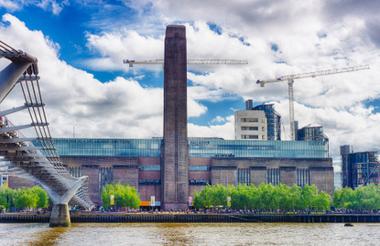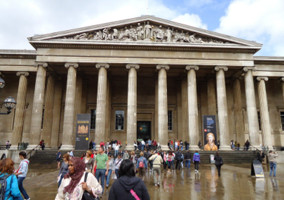Tate recorded a deficit of nearly £9m last year while its costs increased by more than £30m, according to recently filed accounts.
Accounts for the year to March 2023 show that the charity’s total income and endowments stood at £146.2m in 2022-23 against total expenditure of £153.8m.
The charity said that its trustees “have approved a deficit budget for the coming year using unrestricted reserves generated in 2021-22 and 2022-23”.
“This was anticipated and is due to reduced income and an increasing cost base, but general reserves continue to be retained at a level beyond the minimum required for the reserves policy,” it wrote in its accounts.
“This decision was made to give Tate time to develop a new financially sustainable business model which will support the organisation’s strategic objectives and respond to visitor expectations.”
Costs rise by over £30m
Tate’s total income and endowments increased from £145.6m in 2021-22 to £146.2m last year while its expenditure rose from £123.1m to £153.8m.
The accounts say that “in terms of controllable revenue and expenditure items in the income and expenditure statement, Tate made a deficit of £8.78m in the year”, which includes “a £10.7m net loss on disposals following a detailed review of historic additions to buildings, plant and fit-out”.
Grant in aid income from the Department for Culture, Media and Sport fell by £3.3m to £54.2m and donated works of art from £23.2m to £5.8m.
Overall, self-generated income increased from £87.7m to £91.4m, with fundraising income (including capital) returning to pre-pandemic levels, at £35.7m.
However, the accounts say: “With Tate previously generating more than 60% of its revenue from sources other than grant in aid, including contribution from the restaurants and cafes operated by Tate Enterprises, the continued reduction in self-generated income has been significant.
“Moreover, the lessons of the past few years and the uncertainties caused demonstrate that such vulnerability is unsustainable. This year has seen Tate adapt to these new circumstances and plan for the development of operations that are more resilient.”
Audiences returned in ‘greater numbers’ than expected
The accounts say that Tate’s recovery after Covid-19 “has been strong”, with audiences returning “in greater numbers than had been expected”.
The number of visitors to all Tate galleries totalled just under six million, compared with 3.07 million the year before but lower than 8.26 million in 2019-20.
“Tate’s recovery after the effects of the coronavirus pandemic has been strong. This period has seen audiences return in greater numbers than had been expected, and the development of a vision and strategy that will provide for a future that is sustainable, financially and environmentally. The programme and displays at all galleries have been vibrant and introduced both new perspectives on familiar names and new artists to new audiences,” the accounts read.
“However, like all businesses and individuals, Tate has felt the effect of rising energy prices and wider economic pressures. In addition to the impact on the costs to the business, both directly in increasing energy bills and passed on in the procurement of goods and services, it has been observable that the rising cost of living has affected audiences and spend in Tate’s shops and restaurants. The programme and offer remain strong, and the appeal palpable, but the wider context is sure to have taken its toll.”
Related articles












